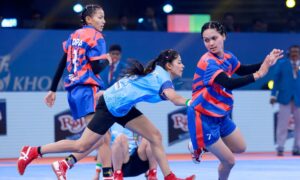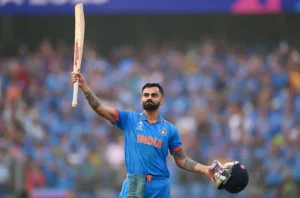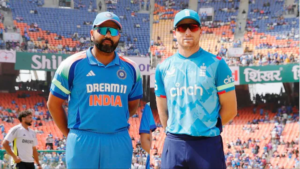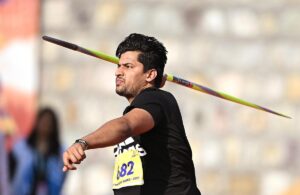Kho-Kho Sets Sights on 2036 Olympics, Marking 100 Years Since Its Berlin Debut

As an indigenous sport with a modest global presence, Kho-Kho is setting ambitious goals, and the Indian government is backing its journey. The inaugural Kho-Kho World Cup, currently underway, is more than just a celebration of the sport’s evolution from rural India to glitzy, TV-friendly indoor arenas—it’s a stepping stone toward Asian Games inclusion and a potential Olympic debut in 2036, coinciding with India’s aspirations to host the Summer Olympics that year.
The World Cup has received significant support, with state governments of Uttar Pradesh, Maharashtra, and Odisha among the two dozen sponsors. The Rashtriya Swayamsevak Sangh (RSS) is also playing a role in promoting the sport as a symbol of India’s cultural heritage. The tournament’s grand opening ceremony featured Vice President Jagdeep Dhankhar, ministers, Bollywood stars Salman Khan and Tiger Shroff, along with night games under lights and live broadcast coverage.
Aiming for the Olympic Stage
Sudhanshu Mittal, president of both the International Kho-Kho Federation (IKKF) and Kho-Kho Federation of India (KKFI), is optimistic about Kho-Kho’s future on the international stage.
“Kho-Kho at the Olympics is the ultimate goal. I am confident of its inclusion in the Asian Games,” said Mittal, who has led the sport’s governing body in India since 2017.
Kho-Kho is one of six sports that India’s Mission Olympics Cell is pushing for inclusion in the 2036 Olympics, alongside Twenty20 cricket, kabaddi, chess, squash, and yoga.
Recently, Sports Minister Mansukh Mandaviya made an appeal to the Olympic Council of Asia (OCA) to include Kho-Kho in the Asian Games, citing its rising global popularity. “Kho-Kho is gaining traction in various countries. Given its widespread appeal, I request its consideration for inclusion in the Asian Games,” Mandaviya wrote in a letter to OCA President Randhir Singh.
Global Expansion: From 6 to 55 Member Countries
Kho-Kho’s international footprint has expanded dramatically, growing from just six member countries in 2020 to 55 in 2025. The first-ever World Cup has attracted 39 teams from 23 countries, including four each from Europe and Africa.
The IKKF aims to increase participation to over 90 nations, surpassing the 75-country threshold required for Olympic recognition. According to Mittal, Kho-Kho’s global expansion is being driven by not just the central government but also the RSS, which sees the sport as a key cultural export.
“Kho-Kho is India’s game. We’ve been adopting games from other countries, but this is one sport that is spreading its wings globally. The Sangh, as a nationalist organization, has played a significant role in promoting both the game and the World Cup,” Mittal added.
Bringing the World to Kho-Kho
To attract international participation, the IKKF has covered all expenses for foreign teams, including kitting, air travel, accommodation, food, and transport.
Brazil, a newcomer to the sport, fielded a men’s team assembled just four months ago. Head coach Laura Doering recruited players from American football, flag football, sprinting, and handball.
“We scouted athletes with speed and agility. Training started on sand, followed by four dedicated camps. Sponsors in Brazil are now eager to introduce Kho-Kho in schools,” Doering revealed. Plans are already in place for a South American Kho-Kho Championship after the World Cup.
To accelerate global adoption, IKKF dispatched eight certified coaches worldwide before the World Cup. In early 2020, 62 potential coaches from 16 countries trained in Delhi. However, the COVID-19 pandemic led to an unexpected twist—they were stranded in Karol Bagh for nine months.
“Initially, training was planned at Nehru Stadium. During the lockdown, we adapted and trained them at a wooden hall in Karol Bagh. This actually helped promote the sport in countries like Australia, Poland, and the Netherlands,” said MS Tyagi, Secretary (Technical), IKKF. Despite interest from 35 nations, the World Cup adhered to continental quota restrictions.
Modernization: From Mud Pitches to High-Tech Courts
Kho-Kho has undergone significant modernization, transitioning from mud and grass surfaces to specialized mat courts. The Ultimate Kho-Kho league, featuring six teams and top-tier sponsors, played a key role in refining the sport for TV broadcast and international audiences.
During experimental leagues, organizers realized that the traditional court size was unsuitable for television viewing.
“The long shots failed to capture the game’s intensity. We shortened the court and developed a custom mat with the right density—fast enough for the sport while ensuring safety,” Mittal explained.
Additionally, a new shoe prototype tailored for Kho-Kho is being developed in collaboration with a leading sportswear brand and Indian designers, incorporating player feedback.
India Triumphs in Inaugural World Cup
The first Kho-Kho World Cup concluded with India dominating both men’s and women’s finals, defeating Nepal in both categories.
•Men’s Final:India 54-36 Nepal
•India scored 26 and 28 points in the first and third turns, showcasing dynamic sky dives.
•Nepal managed 18 points each in the second and fourth turns.
•Final Score: India 247 – Nepal 143
•Women’s Final:India 78-40 Nepal
•India delivered explosive performances, scoring 34 and 44 points in key turns.
•Nepal managed 24 points in Turn 2, but India’s defense lasted 5 minutes and 14 seconds, sealing a dominant win.
A Springboard to Olympic Glory?
For India’s men’s team captain, Pratik Waikar, the World Cup is just the beginning. “Kho-Kho has been transformed. It’s a dream come true to captain India at the first-ever Kho-Kho World Cup,” he said.
As India pushes for Olympic inclusion in 2036, Kho-Kho’s rapid international growth, government support, and modernization efforts signal a bright future for the sport on the global stage.








